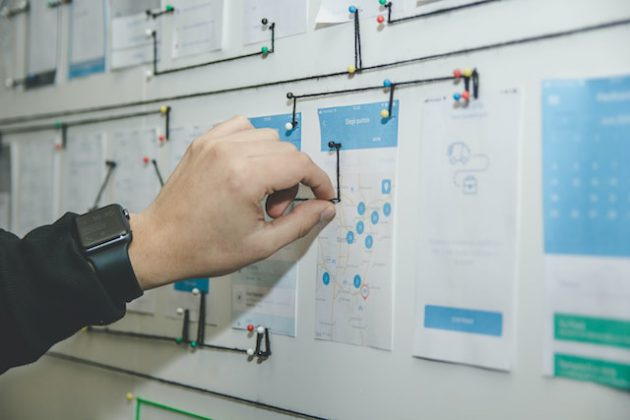In the past few weeks, I’ve written about to-do lists and calendars. While important, these can’t control your entire work day every day. Otherwise, work would become monotonous. Creativity is critical for keeping work interesting and successful. In this blog, I’m exploring how and why you should get creative in the workplace.
Defining Creativity
This is one of those terms that gets tossed around. What is creativity after all? It’s not just being able to create art or invent a new product. It’s an approach you can take to any situation at work. In the words of Albert Einstein, “Creativity is seeing what others see and thinking what no one else ever thought.” The Oxford Dictionary has a less interesting way of defining this concept: “the use of the imagination or original ideas.” Essentially, though, we’re saying the same thing here.
As this Forbes article opines, creativity is a key tool for all industries. It isn’t the responsibility of a single individual, team, or department. Instead, it’s a component of everyone’s role and responsibility. Being creative requires employees to engage in the scientific process at work. Everyone can do that! Just observe what’s happening, ask curious questions, form hypotheses, and test your predictions. As you can see, creativity is an approach you can take regardless of your job description.
Some Mythbusting
Unfortunately, creativity can get blocked by some common misconceptions. Don’t worry. I’ll clear them up for you. As mentioned above and in this article, some people think creativity is only for certain fields. Of course, marketing needs creativity, but does finance? Yes, it does! Every industry faces challenges that demand creative solutions. For instance, companies looking to automate routine tasks can invest in workflow automation software to speed up business processes. Don’t think you happen to work in a company with no such problems to solve. If you’re not constantly improving, a competitor is bound to get the upper hand. Creativity is key to staying on top of your game.
Another myth: many people think it’s best to make decisions quickly. If a meeting is created to address an issue, the resolution should be reached within 30 minutes. Of course, it feels great to check items off your to-do list. However, speed isn’t the way to access creative thinking. Instead, decisions should be intentionally delayed to allow time to consider issues from new perspectives.
Additionally, we think that criticizing ideas is smart. This study found that being critical makes others perceive you as more intelligent. Unfortunately, though, being critical doesn’t actually mean you’re smart. That’s just a cognitive heuristic. In fact, criticizing ideas too soon can shut down creative ideas. That’s related to another misconception. Brainstorming does not work better in groups. In fact, when people try to come up with ideas all together, fewer ideas surface. One of the reasons why is because we’re afraid that someone will think our ideas are stupid. Asking people to brainstorm individually and then combining the lists generated can actually be much more effective. Why don’t more teams do that?
Why You Should Prioritize Creativity
Getting rid of those myths and improving creativity is not to be sneezed at. Creativity can make a big difference in your bottom line, as this research from McKinsey shows. That benefit probably arises for a multitude of reasons explained here. First, companies that encourage creative thinking will solve customers’ problems best. They may even be the first to see a new problem that needs a solution! Second, the creative process supports team collaboration. In addition, creative outlets at work improve employees’ job satisfaction. With opportunities to think out of the box, employees are happier at work. This makes them more likely to stay and attracts top talent.
Finally, you should be keeping your eyes on the prize, literally. Creativity can help companies win awards and get noticed. In a competitive world, every bit of recognition matters.
Get Creative
Okay, so you’re ready to start bringing a little more creativity into your workday? Here are some ideas to get started. This article shares some great general guidelines. For instance, be curious. Remember to engage in that scientific process I mentioned above. Next, be open-minded. Look for new perspectives and information you can learn. To balance these intentional attitudes, you should also make time to let your mind wander. This research found that daydreaming can increase your creativity. This time is just as important as focused work time! Make space for it in your calendar. Finally, whenever you’re brainstorming, give yourself time to come up with really out there ideas. Don’t shoot down the wacky ones right away. Instead, try plussing. It’s an approach that lets you make ideas better instead of dismissing them out of hand.
 The Forbes Business Council also collected advice for getting out of a creative rut. They emphasize the importance of building habits that support creative thinking. For instance, take breaks during your workday. During this time, you can exercise, go outdoors, or listen to music. All of these will jumpstart your creativity. Other approaches involve exposing yourself to others’ original ideas more regularly. You can do this by following startups in your field or joining a mastermind group. Whatever you choose, make the push for creativity a habitual part of your day.
The Forbes Business Council also collected advice for getting out of a creative rut. They emphasize the importance of building habits that support creative thinking. For instance, take breaks during your workday. During this time, you can exercise, go outdoors, or listen to music. All of these will jumpstart your creativity. Other approaches involve exposing yourself to others’ original ideas more regularly. You can do this by following startups in your field or joining a mastermind group. Whatever you choose, make the push for creativity a habitual part of your day.
Lead the Push for Creativity
Of course, if you’re a leader in the workplace, you have an especially important role to play in facilitating creativity. The McKinsey research I mentioned earlier has some suggestions of approaches to embrace. This includes setting specific goals for the company to guide creative processes. Additionally, engaging in regular data-driven decision making promotes quick responses to new situations. To find a creative solution, you first need to know there’s a change in the problem!
In addition, this Forbes article underscores the value of a growth mindset for creative leadership. Cultivate this mindset by attending professional development opportunities, reading, and being open to new solutions.
Finally, there are tangible investments leaders can make in the creativity of their employees. That McKinsey research highlights the value of User Experience research. Leaders can choose to invest in more than simple surveys. The most creative companies set aside resources to enable deeper study of users’ needs, like ethnographic research. Additionally, this article suggests that employing automation can leave employees with more time for creative tasks. If you’re looking for a creativity boost, check out Pyrus’s easy-to-use workflow management software. By automating your business processes, you’ll find creativity blossoming as Pyrus moves your work forward.




